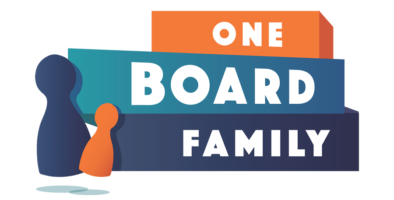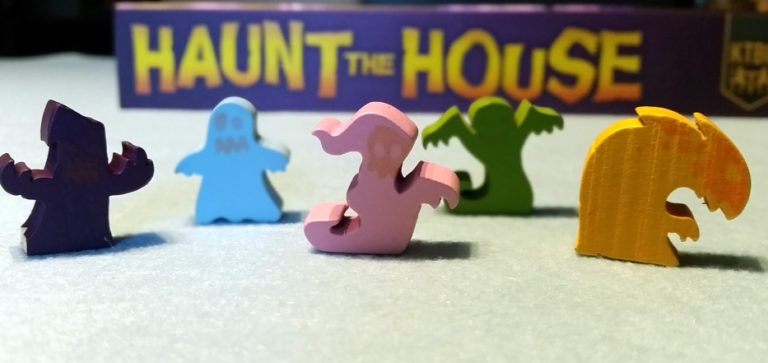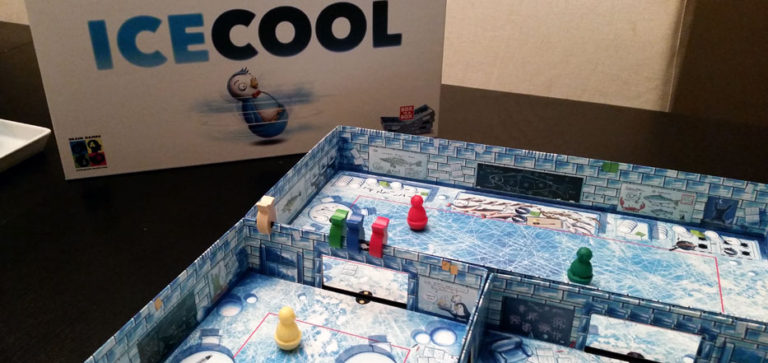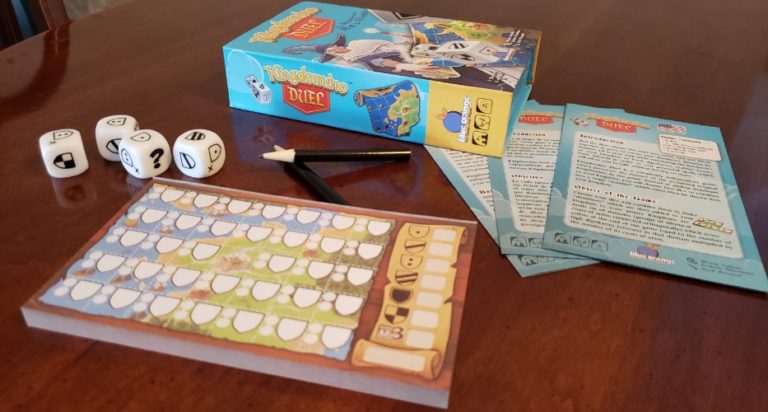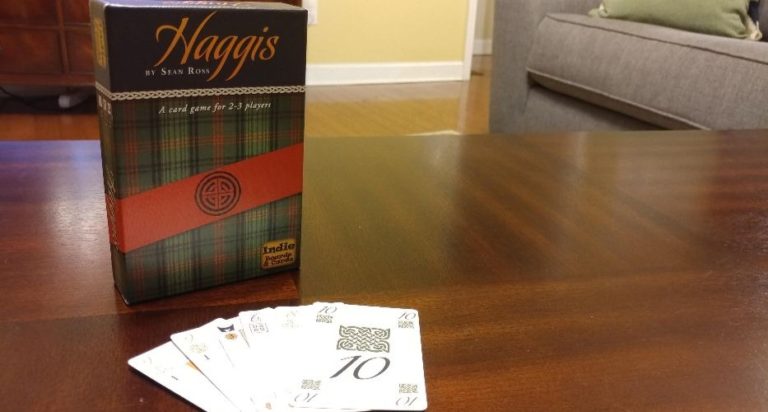Collectible Card Games are an interesting topic around our home. I was consumed by Magic the Gathering during my teenage years. I played into college but a lack of finances eventually brought that era of card games to a close. Over the years I’ve played the Star Wars CCG, Pokemon with the kids in elementary school and more recently Star Wars Destiny.
This style of game tugs at the obsessive part of me that has to collect and continue buying new cards. This is an area of my life that I’ve done a good job starving so that my family doesn’t literally starve.
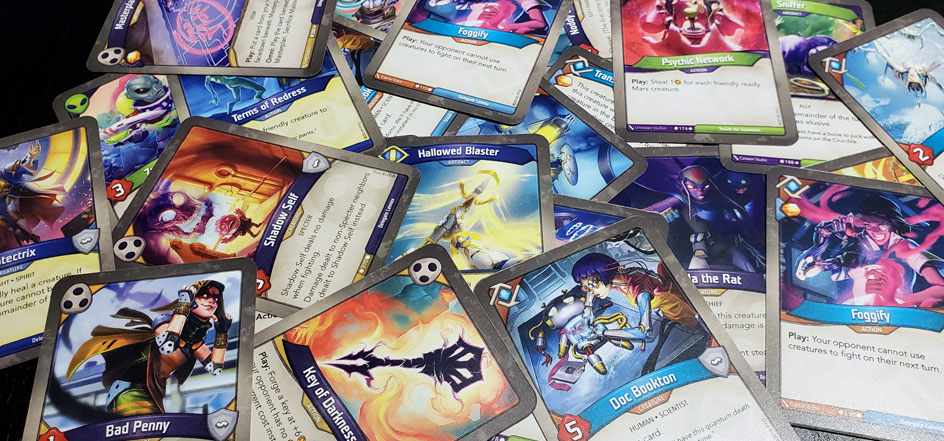
KeyForge from Fantasy Flight Games has an incredibly attractive model to the person who cannot commit to chasing powerful cards, obsessively building new decks and dumping money into boosters. The question is, can this attractive model keep people playing in spite of some annoying flaws?
Why is KeyForge Unique?
This 2-player game first peaked my interest when it was announced at GenCon in August. Every deck of cards in KeyForge is randomly generated using algorithms to relatively balance what you get. When you drop $10 for a new deck, you get everything you need to play against another opponent. You cannot remove or add cards to the deck. This makes KeyForge incredibly unique since you could essentially spend $10 and never have to spend another dollar.
For myself, this is what gets me to the table with KeyForge. I can afford this! This game is extremely accessible because you aren’t constantly looking for specific cards and buying boosters. It also means I’m not going to be beat by a player who spent $100 on a card that will destroy me.
Each deck will have common, uncommon and rare cards that fit into three different factions called “houses”. The deck is given a computer generated name along with a unique image on the back of the deck.
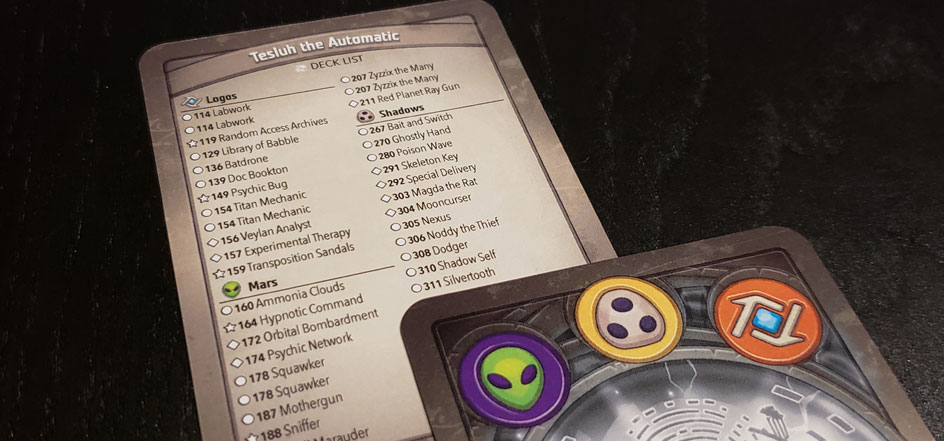
Welcome to My House
KeyForge as a world is not super compelling. I could care less about the lore written about these different factions that are warring against one another. The art on the cards is beautiful but has never tempted me into researching why a bear monster and a stereotypical green alien are throwing fists.
Players are working to produce or steal Æmber. Each time you reach 6 Æmber, you can forge a key. If you’re the first to forge 3 keys, you win the game.
In the game, everything revolves around six “houses”. Dis, Sanctum, Logos, Untamed, Mars and Shadow. Players will call a house during their turn. This allows the player to play, attack or discard any cards from that particular house. I love this mechanic because it brings out some tough choices during your turn. Players have to commit to a house for a turn then change course on a future turn if they have better options with a different house.
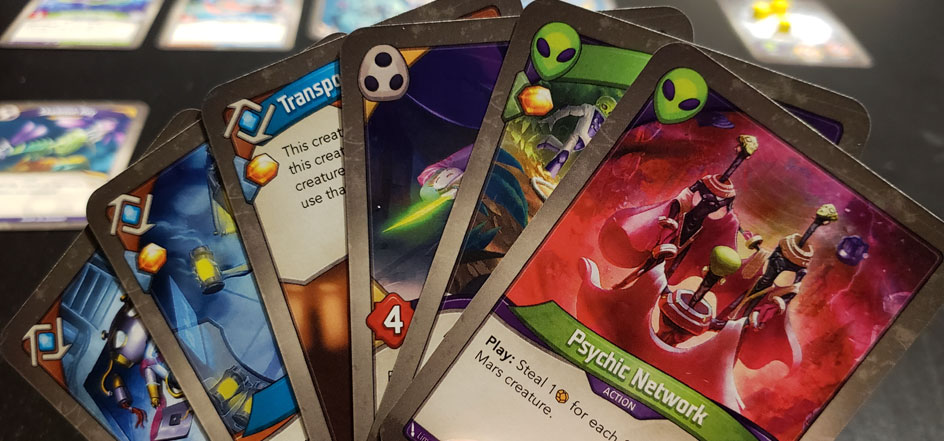
The different houses have strengths and weaknesses. As you play the game more, you start to find your favorites. Since the decks are procedurally generated, some decks can feel like a dud the first time you play with it. The second deck that I purchased is very slow in producing Æmber but has some pretty cool cards. I’m enjoying my time learning how to best play with this deck but at times I ask the question “Why?”
As innovative as KeyForge is, procedurally generated decks can be a disaster. Decks play very different from one another and ultimately requires you to play over and over to learn the rhythm. While I like this formula, I really wonder how long I should spend learning a new deck. If I lose 3 games back to back, should I try to sell the deck? Should I pawn it off on others to play and give me advice?
Is KeyForge the Card Game for You?
I’ve played with a couple different KeyForge decks and own two very different decks myself. I’ve been impressed with some of the really tight games I’ve played. It feels like a real battle as you attack creatures and use the reap action to produce Æmber. I haven’t played a game where I felt like there was no chance to win.
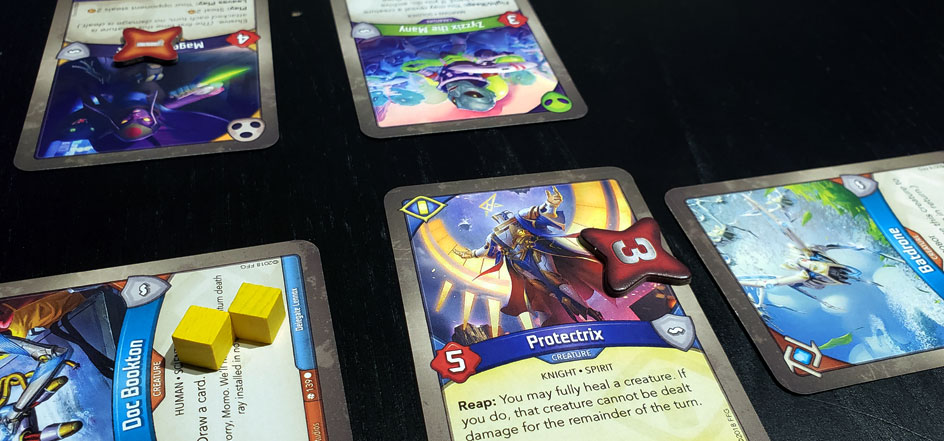
I’ve taught the game 3 or 4 times and it’s been easy for people with some background in CCGs to grasp. It takes some time to find the best combos in the deck you have so don’t expect to win your first match. My 13 year old son and I have enjoyed playing KeyForge together so much. Because we are familiar with the decks we own, we’ve developed strategies and tactics to win.
On the topic of winning, KeyForge as a game has a real issue with feeling very “swingy”. One round you will have so much confidence in winning just to have your opponent steal Æmber and set you back for another couple rounds.
While I really enjoy the artwork on the cards, the different houses make KeyForge feel like this very fractured world. It doesn’t have the strength of some of the other card games on the market today. Honestly this isn’t a huge gripe when the entry into this game is only $10.
When you visit your local game store, you’ll notice that there is a starter box for KeyForge that is around $40 and individual decks priced at $10. The starter box comes with 2 structured KeyForge decks, 2 random decks, Æmber tokens, cardboard counters and the keys that you produce during the game. This starter box might be good for someone new to card games like this. Unless you need the cardboard counters and tokens, you can pass on the starter box.
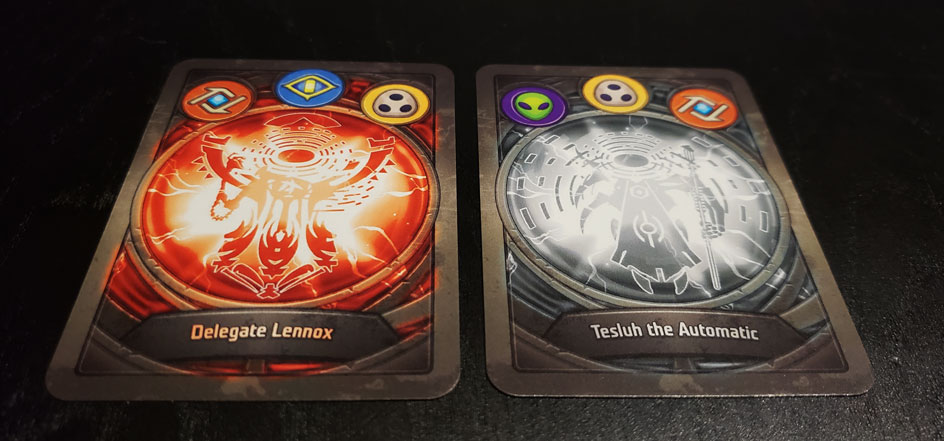
KeyForge is definitely not the game for CCG fans who are looking for the next big game in the vein of Magic the Gathering. This is a far more casual game that doesn’t require the dedication of traditional collectible card games.
Everytime I pick up a new deck, I know that it’s going to be a crap shoot. At the cost of $10, it’s a risk I’m willing to take. In all the games I’ve played with my son, friends and co-workers, KeyForge has been a breath of fresh air in a genre that I had no desire to dip my toe back into.
You can purchase KeyForge decks at your local game store, on Amazon or on Miniature Market.
Highs
- Great artwork and diverse card abilities
- Cost of entry is only $10 for a deck
- Division of cards by houses offer tough decisions each round
- No buying boosters and chasing powerful cards
Lows
- Games can feel swingy and unbalanced at times
- Buying a bad deck of cards is totally possible
- Lots of questions about the future of KeyForge
